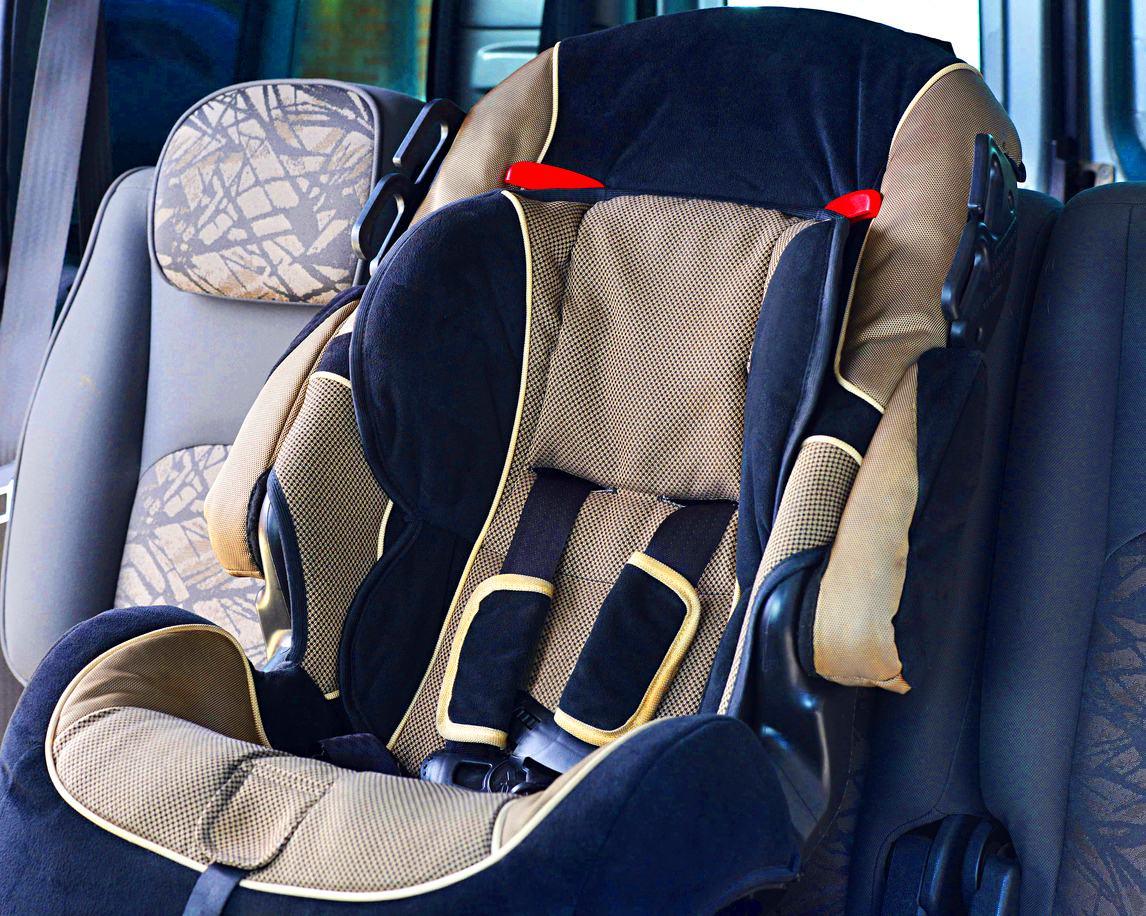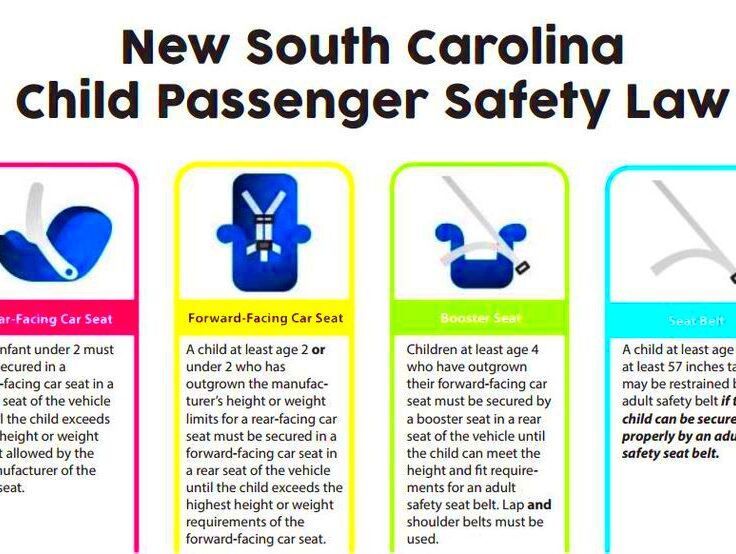Car Seat Laws in South Carolina and What Parents Must Follow
Car seat laws are designed to keep our little ones safe while traveling. In South Carolina, these laws specify how children should be secured in vehicles based on their age, weight, and height. It’s crucial for parents to understand these regulations not just to comply with the law but to ensure the safety of their children during every car ride. Knowing the specifics can help prevent accidents and save lives. Let’s dive deeper into the different types of car seats and what parents need to follow to stay compliant.
Types of Car Seats Required

There are several types of car seats that parents should be aware of, each serving a different purpose based on a child’s age and size. Here’s a breakdown:
- Infant Car Seats: These are rear-facing seats designed for newborns and smaller infants. They typically have a weight limit of up to 35 pounds.
- Convertible Car Seats: These can be used as both rear-facing and forward-facing seats, making them a versatile option as your child grows.
- Booster Seats: For older children who have outgrown their car seats, booster seats elevate them so that the seat belt fits correctly.
- All-in-One Seats: These can be used from infancy to adulthood, converting from rear-facing to forward-facing to a booster seat.
Choosing the right car seat can be overwhelming, but remember that safety should always come first. Always check the manufacturer’s guidelines for weight and height limits.
Age and Weight Requirements
South Carolina has specific age and weight requirements for car seats to ensure children are properly secured. Here’s a general guideline:
| Age Group | Type of Car Seat | Weight Limit |
|---|---|---|
| Birth to 2 years | Rear-Facing Car Seat | At least 20-35 pounds |
| 2 to 4 years | Forward-Facing Car Seat | At least 20-65 pounds |
| 4 to 8 years | Booster Seat | At least 40 pounds |
| 8 years and older | Seat Belt | Must fit properly without a booster |
Remember, these are general guidelines, and individual car seat manufacturers may have different specifications. Always refer to the car seat manual for the safest usage.
Installation Guidelines for Car Seats
Installing a car seat correctly can be a bit tricky, but it’s vital for your child’s safety. In South Carolina, the law requires that children be properly secured in an appropriate car seat based on their age and size. Here are some guidelines to ensure you’re installing the car seat the right way:
- Read the Manual: Always start by reading the car seat manual and your vehicle’s owner manual. Each seat and vehicle may have unique requirements.
- Choose the Right Location: The back seat is the safest place for children. If possible, place the car seat in the middle seat, as it’s the furthest away from side impacts.
- Secure with Seat Belt or LATCH: You can use either the seat belt or the LATCH (Lower Anchors and Tethers for Children) system to secure the car seat. If using LATCH, ensure the combined weight of the child and the seat doesn’t exceed the vehicle’s limit.
- Check for Movement: After installation, give the car seat a good shake at the base. It should not move more than an inch side to side or front to back.
- Angle and Harness Adjustments: Ensure the car seat is at the correct angle, especially for rear-facing seats. Also, adjust the harness so it fits snugly against your child’s shoulders.
Taking the time to install the car seat correctly can make all the difference in an emergency. Don’t hesitate to reach out for help if you’re unsure!
Common Mistakes Parents Make
Even the most well-meaning parents can make mistakes when it comes to car seat safety. Here are some common pitfalls to avoid:
- Using the Wrong Seat: Choosing a car seat that’s not suitable for your child’s age or size can compromise safety. Always check the weight and height limits.
- Incorrect Installation: Failing to secure the car seat tightly can lead to dangerous outcomes. Make sure it doesn’t move more than an inch.
- Outgrowing the Seat: Not transitioning to the next car seat at the right time can put your child at risk. Follow the guidelines for age and weight limits.
- Improper Harness Use: The harness should fit snugly. Many parents mistakenly leave it too loose. A good test is to check if you can pinch the harness webbing.
- Using Expired Car Seats: Car seats have expiration dates. Using an expired seat can be unsafe, as materials may degrade over time.
Awareness is key. Regularly check to ensure you are following all guidelines and best practices for car seat safety.
Safety Tips for Car Seat Use
Keeping your child safe in a car seat involves more than just installation. Here are some important safety tips to keep in mind:
- Stay Rear-Facing as Long as Possible: It’s recommended to keep children in rear-facing car seats until they are at least two years old or until they reach the maximum weight limit of the seat.
- Check the Fit: Regularly check that your child fits well in the car seat. The harness should be at or above their shoulders for forward-facing seats and at or below for rear-facing seats.
- Don’t Use Thick Coats: Avoid putting your child in a thick coat while buckled into the car seat, as it can create extra space that may compromise safety. Instead, use blankets over the harness once buckled.
- Keep the Car Seat in the Back: Always place car seats in the back seat. The front seat is not safe for children under 13 years old.
- Attend Safety Inspections: Look for local events where certified technicians provide car seat checks. These inspections can help ensure your seat is installed correctly.
Following these safety tips can greatly reduce the risk of injury in the event of an accident. Always prioritize safety above all else.
When to Transition to the Next Car Seat
Knowing when to transition your child to the next car seat is crucial for their safety. Each type of car seat is designed for specific age, weight, and height limits. Here’s a simple guide to help you make that important decision:
- From Infant to Convertible: If your child is over the weight limit (usually around 35 pounds) or reaches the height limit for their infant car seat, it’s time to move to a convertible seat. Ideally, keep them rear-facing for as long as possible, ideally until they are at least 2 years old.
- From Convertible to Forward-Facing: Once your child outgrows the rear-facing limits (typically around 40-50 pounds), they can transition to a forward-facing seat. Ensure the seat is properly installed, and the harness is snug.
- From Forward-Facing to Booster: Kids usually transition to a booster seat when they are about 4 years old and weigh at least 40 pounds. The booster seat helps position the vehicle’s seat belt correctly across the child’s body.
- From Booster to Seat Belt: Children can move to a seat belt alone when they are around 8-12 years old, depending on their height (typically at least 4’9”) and weight. The seat belt must fit properly, resting across the thighs and chest.
Regularly check your child’s growth and ensure they are in the correct seat for their size. It’s always better to err on the side of safety!
Resources for Parents and Caregivers
Finding accurate information on car seat safety can be overwhelming, but many resources are available to help parents and caregivers. Here are some trusted options:
- National Highway Traffic Safety Administration (NHTSA): Their website offers a wealth of information about car seat laws, installation guides, and safety tips.
- Safe Kids Worldwide: This organization provides resources on child passenger safety, including local car seat checks and safety events.
- Local Fire Departments and Hospitals: Many fire stations and hospitals offer free car seat inspections. It’s a great way to ensure your car seat is installed correctly.
- Car Seat Manufacturer Websites: Always refer to the manufacturer’s manual for specific installation instructions and safety guidelines for your car seat.
Connecting with local parenting groups or community organizations can also provide valuable support and information. Don’t hesitate to reach out for help; ensuring your child’s safety is a team effort!
FAQs About Car Seat Laws
As a parent, you likely have many questions about car seat laws. Here are some frequently asked questions to help clarify common concerns:
- What is the law regarding rear-facing car seats in South Carolina? Children must remain in a rear-facing car seat until they are at least 2 years old or exceed the maximum weight limit of the seat.
- Can I use a used car seat? You can use a used car seat if you know its history, it hasn’t been in an accident, and it’s not expired. Always check for recalls.
- Do I need to buckle my child in for short trips? Yes! Most accidents occur within a few miles of home, so it’s crucial to buckle your child every time, no matter how short the trip.
- What if my child is small for their age? Follow the height and weight limits of the car seat. If they don’t meet those requirements, they should remain in the current seat.
- Where can I find car seat inspection stations? Check local listings on the NHTSA website or contact your local fire department for nearby car seat inspection events.
Staying informed about car seat laws is essential for your child’s safety. Don’t hesitate to reach out for more information or assistance!
Conclusion on Car Seat Laws in South Carolina
Understanding and following car seat laws in South Carolina is essential for ensuring the safety of your children while traveling. These laws are in place to protect our little ones from injury in case of accidents. Remember to choose the right type of car seat based on your child’s age, weight, and height, and always install it correctly. Regularly check that your child remains in the appropriate car seat as they grow, and don’t hesitate to seek help from resources available in your community. By staying informed and proactive, you can help keep your child safe on every journey.


